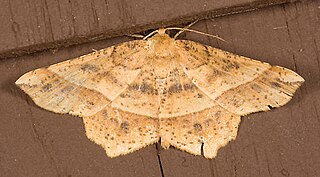Related Research Articles

The hazel (Corylus) is a genus of deciduous trees and large shrubs native to the temperate Northern Hemisphere. The genus is usually placed in the birch family Betulaceae, though some botanists split the hazels into a separate family Corylaceae. The fruit of the hazel is the hazelnut.

Argonauta hians, also known as the winged argonaut, muddy argonaut or brown paper nautilus, is a species of pelagic octopus. The common name comes from the grey to brown coloured shell. The Chinese name for this species translates as "Grey Sea-horse's Nest". The female of the species, like all argonauts, creates a paper-thin eggcase that coils around the octopus much like the way a nautilus lives in its shell. The eggcase is characterised by a wide keel that gives it a square appearance, few rounded tubercles along the keel, and less than 40 smooth ribs across the sides of the shell. The shell is usually approximately 80 mm in length, although it can exceed 120 mm in exceptional specimens; the world record size is 121.5 mm.

The Wych Elm cultivar Ulmus glabra 'Cornuta', in cultivation before 1845 – Fontaine (1968) gives its provenance as France, 1835 – is a little-known tree, finally identified as a cultivar of U. glabra by Boom in Nederlandse Dendrologie 1: 157, 1959.

Eucalyptus cornuta, commonly known as yate, is a tree species, sometimes a mallee and is endemic to the southwest of Western Australia. It has rough, fibrous bark on all or most of its trunk, smooth bark above, mostly lance-shaped adult leaves, elongated flower buds in groups of eleven or more, yellowish flowers and cylindrical to cup-shaped fruit. It is widely cultivated and produces one of the hardest and strongest timbers in the world.

Sphenophryne cornuta is a species of frogs in the family Microhylidae. It is endemic to New Guinea where it is widespread and found both in the Western New Guinea (Indonesia) and Papua New Guinea. Common name horned land frog has been proposed for it.

Cassis cornuta, common name the horned helmet, is a species of extremely large sea snail, a marine gastropod mollusc in the family Cassidae, the helmet shells and their allies.

Euchlaena tigrinaria, the mottled euchlaena, is a moth of the family Geometridae. The species was first described by Achille Guenée in 1857. It is found from New Brunswick to Virginia, west to Texas, Utah and Oregon, north to British Columbia.
Neomicropteryx bifurca is a species of moth belonging to the family Micropterigidae. It was described by Syuti Issiki in 1953. It is known from Japan.
Neomicropteryx elongata is a species of moth belonging to the family Micropterigidae. It was described by Syuti Issiki in 1953. It is known from Japan.
Neomicropteryx kazusana is a species of moth belonging to the family Micropterigidae. It was described by Hashimoto in 1992. It is known from Japan (Honshu).
Neomicropteryx matsumurana is a species of moth belonging to the family Micropterigidae. It was described by Syuti Issiki in 1931. It is known from Japan.
Neomicropteryx nipponensis is a species of moth belonging to the family Micropterigidae. It was described by Syuti Issiki in 1931. It is known from Japan.
Issikiomartyria nudata is a species of moth belonging to the family Micropterigidae. It was described by Syuti Issiki in 1953. It is known from Japan.
Neomicropteryx kiwana is a species of moth belonging to the family Micropterigidae. It was described by Hashimoto in 2006 and is known from Japan.
Neomicropteryx redacta is a species of moth belonging to the family Micropterigidae. It was described by Hashimoto in 2006 and is known from Japan.

Micropterigoidea is the superfamily of "mandibulate archaic moths", all placed in the single family Micropterigidae, containing currently about twenty living genera. They are considered the most primitive extant lineage of lepidoptera. The name comes from the Greek for mikros, little and pterux, a wing. The fossil record of the group goes back to the Middle-Late Jurassic with the earliest known species being Auliepterix from the Karabastau Formation in Kazakhstan.
Coleophora cornutella is a moth of the family Coleophoridae. It is found from Fennoscandia to the Pyrenees and the Alps and from France to Romania.
Erora laeta, the early hairstreak, is a butterfly of the family Lycaenidae. It is found in eastern Canada and the United States. The habitat consists of deciduous and mixed woods.
Norape cornuta is a moth of the family Megalopygidae. It was described by Walter Hopp in 1927. It is found in Ecuador.

Chiloglottis cornuta, commonly known as the green bird orchid, is a species of orchid found in south-eastern Australia and in New Zealand, including many of its offshore islands. It has two broad leaves and a single green or pinkish flower with six to eight rounded, flattened green, reddish or blackish calli on the labellum.
References
- ↑ Beccaloni, G.; Scoble, M.; Kitching, I.; Simonsen, T.; Robinson, G.; Pitkin, B.; Hine, A.; Lyal, C., eds. (2003). "Neomicropteryx cornuta". The Global Lepidoptera Names Index . Natural History Museum . Retrieved May 11, 2018.
- ↑ Japanese Moths
| This article on a moth of the family Micropterigidae is a stub. You can help Wikipedia by expanding it. |